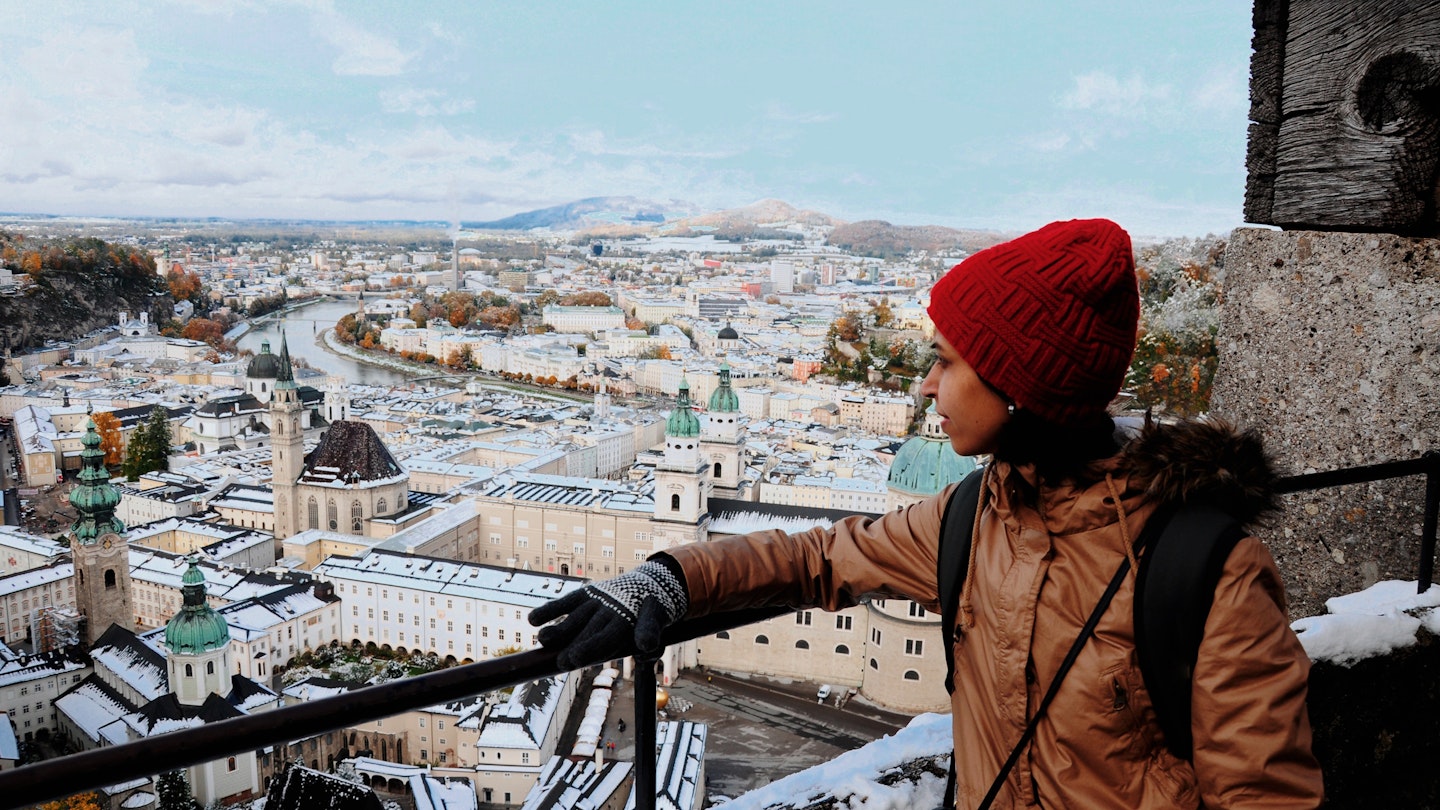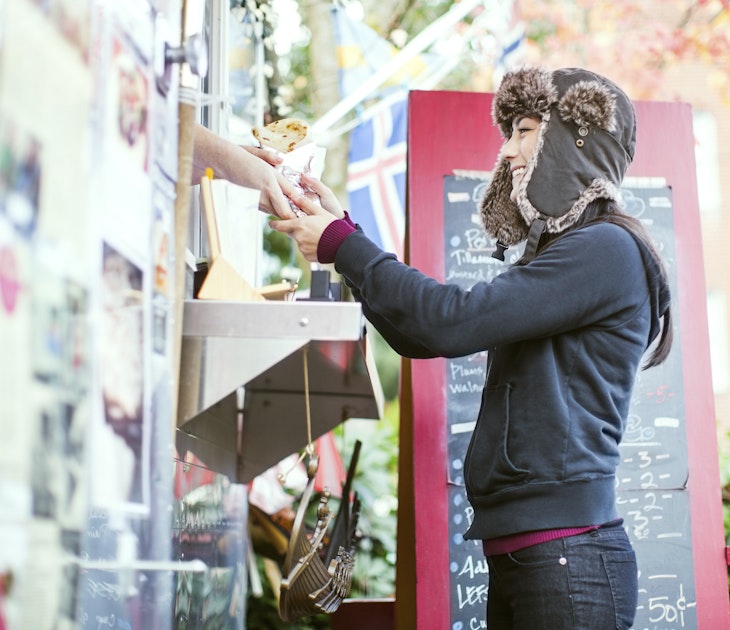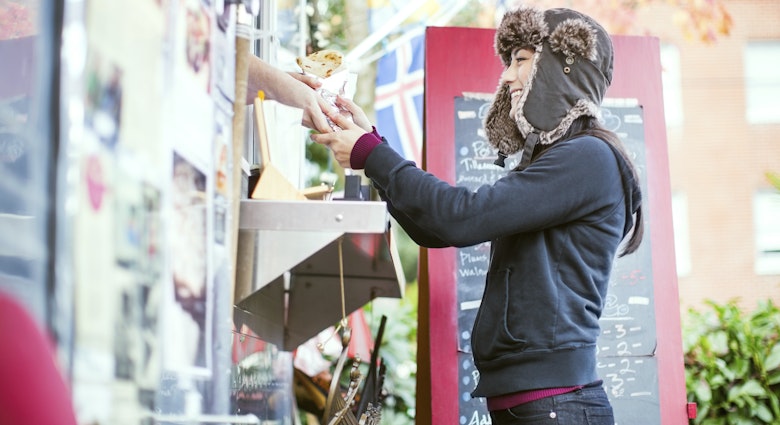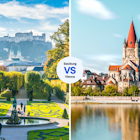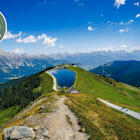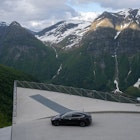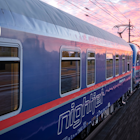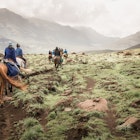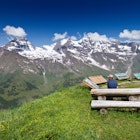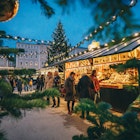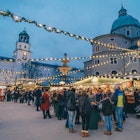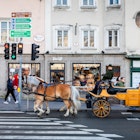Superlatives rarely do justice to the Austrian city of Salzburg, its medieval and baroque skyline set against a heart-stopping alpine backdrop of green meadows and grizzled peaks.
It's also a city that enjoys mythical cultural status; the birthplace of Mozart, the home to the prestigious Salzburg Festival, and the real-life location for the adventures of the von Trapp family, memorably immortalized in 1965 Hollywood flick The Sound of Music.
The Old Town might be the place where visitors will spend the bulk of their sightseeing time, but it is the most expensive part of the city to stay in, and doesn't always have a monopoly on the best food and drink. Luckily, Salzburg is a compact city easily explored on foot or by bike, placing a clutch of fascinating neighbourhoods well within range.

The Old Town is the best neighborhood for history and culture
Squeezed between steep hills and the milky waters of the river Salzach, Salzburg's Old Town, or Altstadt, has the lion's share of the attractions, commanding access to the Hohensalzburg, the fortress that dominates the city from its craggy hilltop perch.
It is an initially confusing but endlessly fascinating jumble of narrow mazy streets suddenly opening out onto set-piece squares, overshadowed by richly-ornamented facades and tumescent church domes. The whole area is riddled with courtyards and arcades; exploring it is akin to burrowing through the holes of a gargantuan piece of cheese.
Many of Salzburg's major attractions are within a few steps of each other. Mozart’s Birthplace on the Getreidegasse is first-stop on any musical pilgrim's tour; while the opulent interiors of both the Cathedral and the Residenz (official seat of Salzburg's erstwhile Prince-Archbishops) provide some idea of what made the city so rich, powerful and uniquely beautiful. The Old Town is also home to some classic Salzburg experiences, such as sitting down to coffee and Strudel at Cafe Tomaselli, or working your way through the multi-course menus in the (allegedly) oldest surviving restaurant in Europe, St Peter Stiftskulinarium.
Of course the Old Town is not just a magnet for tourists, but also the focus of daily life for locals. The city's main market (daily except Sunday) can still be found in front of the imposing Kollegienkirche, where Salzburgers come to stock up on fruit, veg and cheese, or snack on a sausage at the nearby Wurstelstand.
Stop in the Kai Quarter for a drink after sightseeing
Named after Kaigasse which curls its way around a hive of smaller alleys, Kai is a strollable extension of Salzburg's Old Town full of tall medieval houses looming above small, irregularly-shaped piazzas. Less susceptible to tour groups, it's a laid-back area to indulge in a bit of post-sightseeing refreshment. Lindy's on Kajetanerplatz is the perfect place to enjoy a glass of Austrian white; Zirkelwirt on Papagenoplatz offers traditional Austrian cooking in rustic rooms. For more of a splash-out, tuck into innovative game and fish dishes at Marc's.
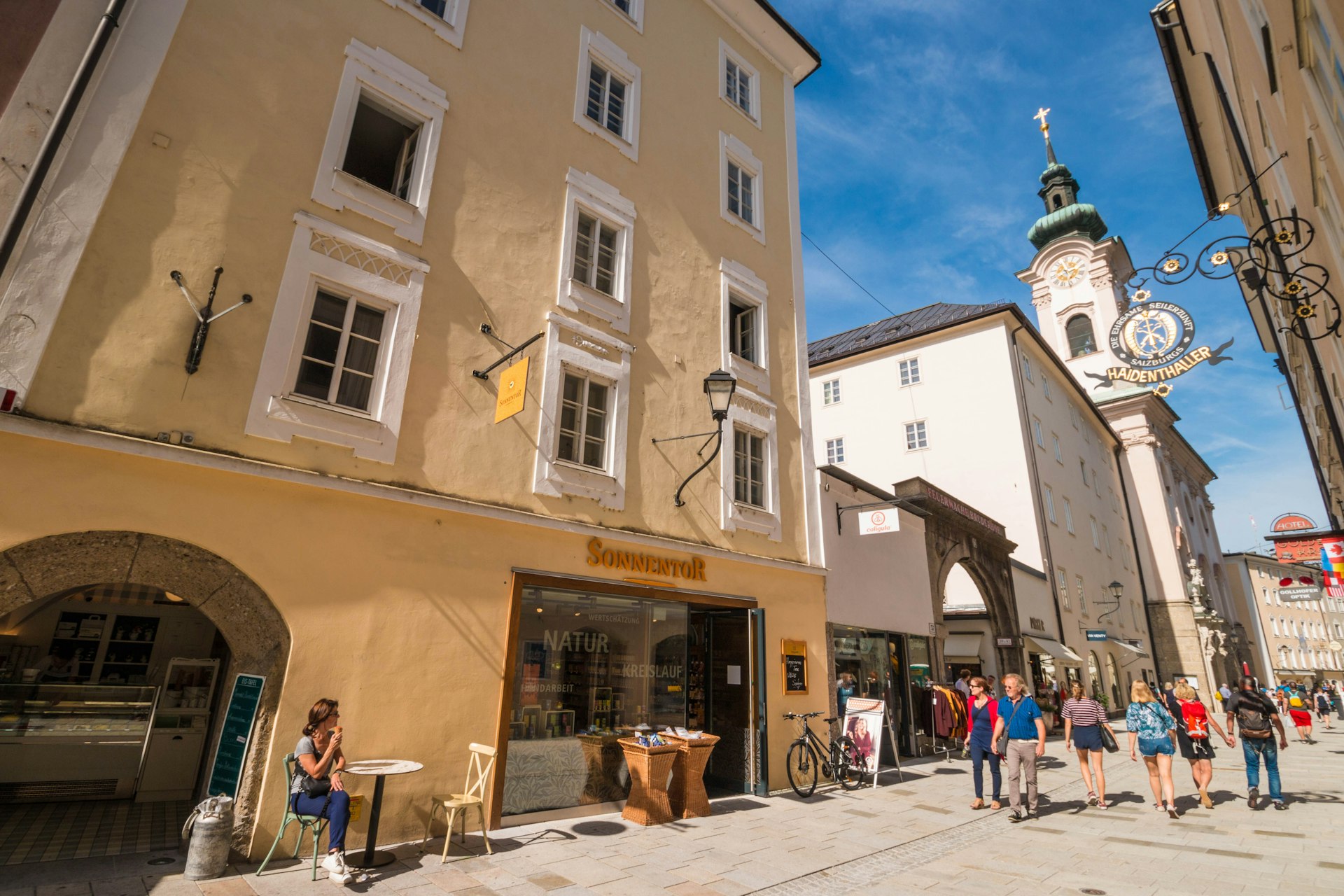
Linzergasse is a lively street, great for people-watching
Immediately opposite the Old Town on the south bank of the river, pedestrianized Linzergasse is one of the most animated parts of the city, a shop- and cafe-lined thoroughfare that links Salzburg's historic core with the residential district to the south. The street sees a constant stream of locals and visitors as a result.
Linzergasse also boasts a handsome sprinkling of historic inns and pensions, many of them cheaper than anything you'll find in the Old Town. The cloisters of St Sebastian's Cemetery, just off the street, is one of the most uniquely restful spots in the city. Shops along the Linzergasse are a mixture of touristy souvenirs, local food shops and the odd fashion boutique; Humana Vintage at no. 28 is a great place to rummage for classic second-hand clothes. One of Linzergasse's trademark features is the sequence of small bars with a scattering of outdoor tables, popular with folks pausing for a quick drink on their way to or from work.
Nonntal is Salzburg's best area for a budget lunch
Just round the corner from the Old Town, Nonntal marks Salzburg's transition from medieval town to modern city. There's a string of quaint baroque buildings along Nonntaler Haupstrasse, the narrow alley that winds its way beneath the Hohensalzburg hill; however it's the Unipark university building, a bold glassy beast standing on concrete stilts, that gives the neighborhood its character.
There's little in the way of accommodations in Nonntal (save for JUFA Salzburg City, one of the city's best budget choices), but the raw vigor of its predominantly young population makes it a compelling place to visit. As you might expect from a student quarter Nonntal is one of Salzburg's best places to eat well and eat inexpensively, with pho soups and noodle dishes at Uncle Van drawing fast-moving lines at lunchtimes. Lurking in a semi-hidden garden courtyard nearby is 220 Grad, Salzburg's leading coffee roaster, offering boutique brews in a cafe that looks like an art gallery and has a delectable menu of snacks.
The neighbourhood is also home of the ARGE cultural center, a bastion of alternative arts and music ever since the early 1980s. The palm- and shrub-shaded terrace of the veggie-friendly Arge Beisl is one of the best places in the city to stop off for an inexpensive but stylish lunch.

St Andrä draws crowds to its gardens and street food market
When locals need a breather from the crowds of the Old Town they often end up in St Andrä, a 19th-century quarter of handsome apartment houses grouped around St Andrew's Church. What makes it a good base for visitors is its position right between the railway station and the Old Town, with the intoxicating colors and scents of the Mirabell Gardens only a few steps away.
It also boasts a cosmopolitan variety of places to eat, with Heart of Joy drawing vegetarians with its inventive salads and curries-of-the-day. Nearby cafe-patisserie Fingerlos is frequently swarming with locals drawn by its all day-breakfasts and signature cakes. For street food, Salzburg-style, head for the huddle of green market huts on the corner of Franz-Josef and Wolf-Dietrich streets, home to an inviting handful of food stores and bakeries selling deli products, sandwiches and inexpensive cooked lunches. And if you happen to be here on a Thursday then St Andrä's weekly Schranne market is a veritable foodie's delight, jam-packed with stalls laden with local farm produce, cheeses, preserves, and a seductive array of eat-on-your-feet deli snacks.
Stop for a beer at Mülln's huge brewery, almost a neighborhood in itself
A cute curve of old houses running around the northern spur of the Mönchsberg hill, the medieval quarter of Mülln is synonymous with beer. Natural, malty, thirst-quenching beer. And lots of it. Credit for this goes to Augustiner Bräu, the vast brewery, beer hall and beer garden that is almost a neighborhood in its own right.
Beer-brewing was started by monks in the 17th century and the way it is served hasn't changed a great deal since: you take your own stoneware mug, give it a rinse at the designated fountain, and hand it to the barstaff who draws it from a huge wooden barrel. With hot snacks from the beer garden's food counters keeping the hunger pangs at bay, you'll find it a difficult place to leave.
Be aware that beer is not all Mülln has to offer: globally-inspired haute-cuisine rules the roost at Magazin, the bistro and wine bar tucked away opposite the brewery; while sweet-toothed pilgrims make a beeline for Baltram, a patisserie that makes its own outstanding ice cream. Cobbled alleyways lead down to Mülln's riverbank and a waterside walk back towards the Old Town – it's especially beautiful in the evening, when the last of the sun lights up the city's baroque domes. The river-facing terrace of Café am Kai is a great place to soak up the view.
